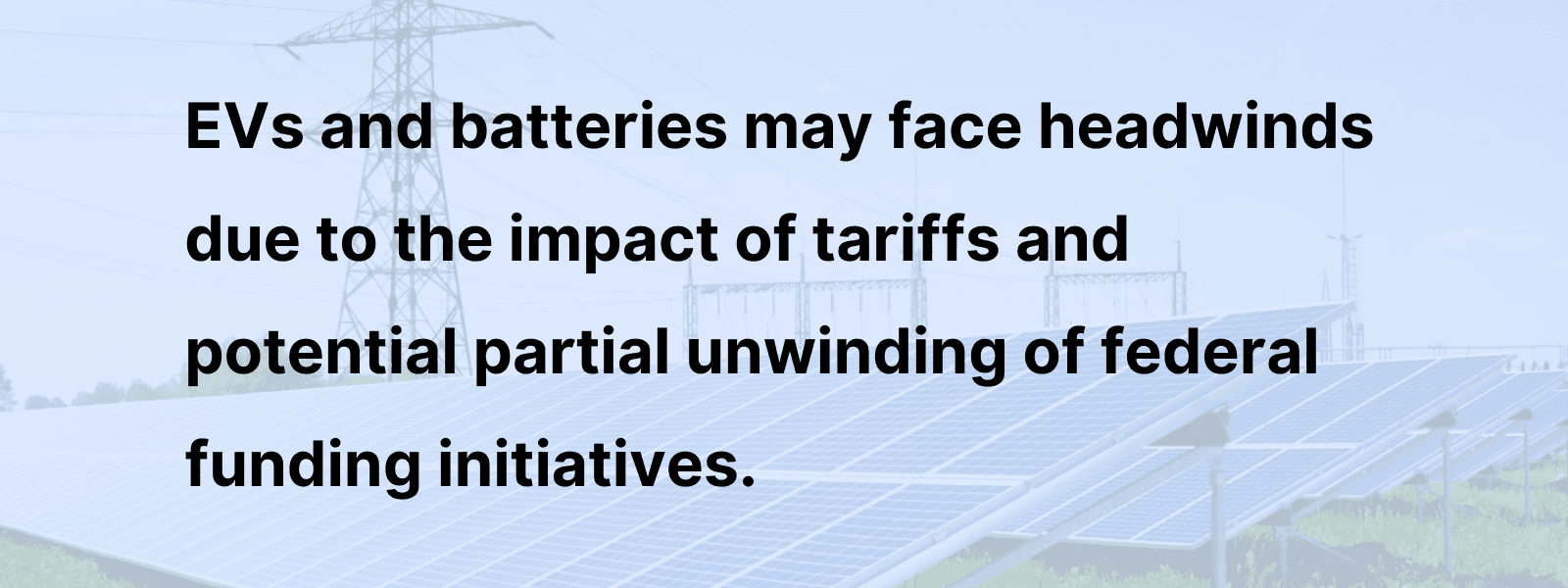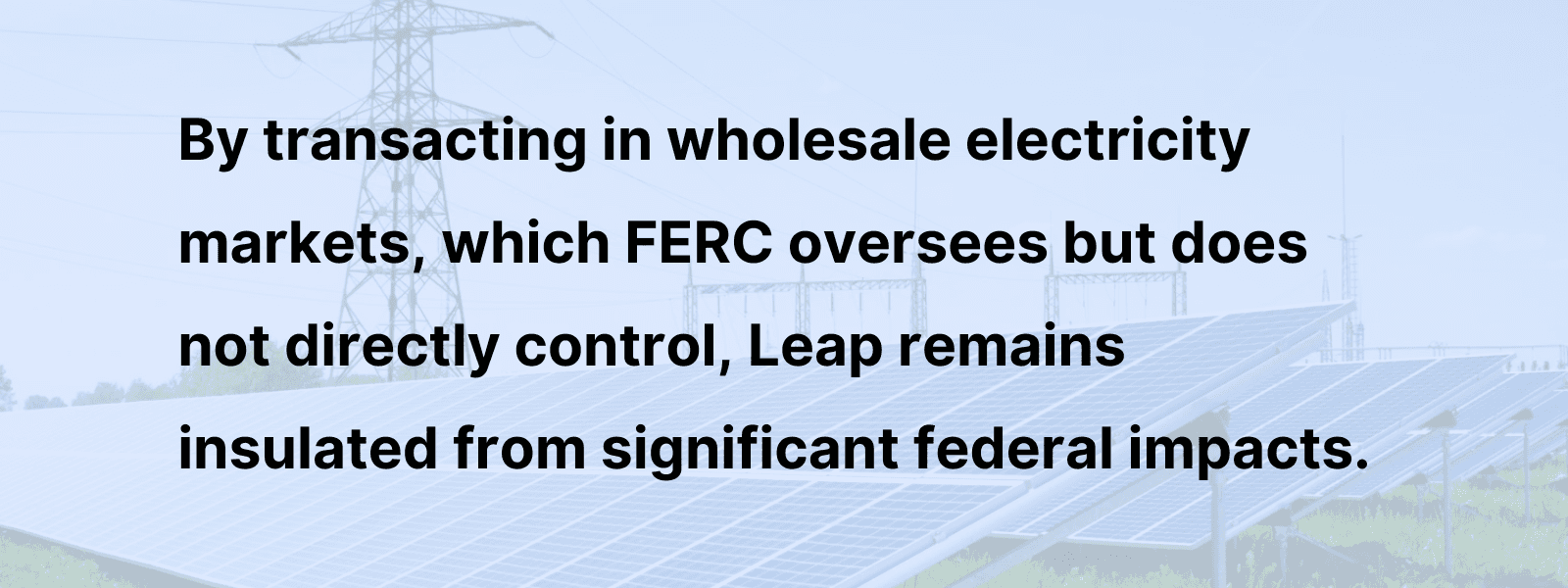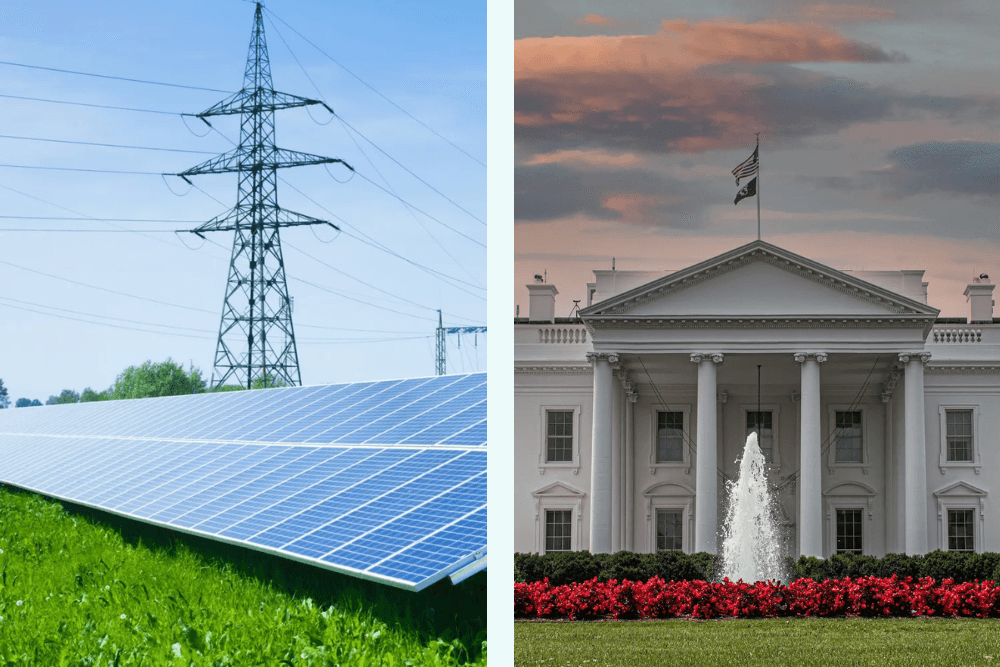November 19, 2024

In these two weeks since the U.S. election, Leap’s team has been analyzing the potential impacts of the change in federal leadership on the virtual power plant (VPP) market and the broader clean energy industry.
First, it’s worth noting that our sector is resilient and adaptable - much like flexible energy resources themselves. While changes in administration and legislative priorities create uncertainty, the structural drivers behind the adoption of clean and flexible energy resources remain robust.
That said, shifting federal priorities will likely have impacts for the proliferation of distributed energy resources (DERs) as well as energy market demands, both of which are intrinsically linked to the advancement of the VPP market.
Our key takeaways:
Demand for grid services will likely increase as load growth accelerates.
EVs and batteries may face headwinds due to the impact of tariffs and potential partial unwinding of federal funding initiatives.
The clean energy transition will continue, albeit with a stronger local focus in the face of reduced federal support.
Impact on Grid Services
We anticipate an overall higher demand for grid services solutions, driven primarily by accelerated load growth. The proliferation of data centers and industrial electrification (among other factors) have caused electricity demand to sharply rise in recent years. Manufacturing onshoring efforts and loosened permitting and environmental review requirements for new construction projects will likely further spur load growth under a Republican-led administration. Demand-side flexibility solutions will be key to ensuring grid stability and resilience during this period.

Impact on the Transition to Renewables
There’s no stopping the rapid growth of renewable energy resources: globally, 85% of new electricity built in 2023 came from renewables, primarily because they are outcompeting fossil fuels economically.
However, a Republican-led administration is likely to place less emphasis on clean energy resource development, leading to an increased focus on natural gas and oil production. Thermal power plant development, as well as investment in nuclear and in carbon capture & storage, will receive a relative boost compared to solar, wind, and battery storage. Tax breaks for renewable energy development are also at risk, and emissions standards may be weakened. Reduced emphasis on clean energy may also have indirect longer-term impacts on VPPs, as the lack of a preference for carbon-free flexibility could stifle some growth opportunities.
Additionally, potential increases in tariffs on imports from countries like China could raise the costs of batteries, solar panels, and other critical clean energy components, slowing growth in the energy storage and EV sectors.
Impact on Federal Funding Initiatives
Congress passed two major funding initiatives over the past four years: the Infrastructure Investment and Jobs Act (IIJA) and the Inflation Reduction Act (IRA). These policies have provided hundreds of billions of dollars of funding, much of it flowing to clean energy development. The IRA has already spurred significant job growth and expanded access to clean energy technologies, benefitting millions of Americans. These dynamics have created strong momentum across the clean energy economy - momentum that will continue regardless of political shifts.
However, while a full repeal of the IRA or IIJA is unlikely given their bipartisan appeal, a partial unwinding is possible. Republicans are likely to try to make the 2017 tax cuts passed during Trump’s first term permanent, and to do so they will need offsetting cost cuts. The good news is, funding that has already been dispersed cannot be called back. The flip side is that funds that have not yet been obligated via a signed contract (particularly those without bipartisan support) are at risk.
Here’s what we consider to be at medium-to-high risk:
Funding for new clean energy and battery storage development as part of the IRA
EV tax credits and funding programs
Energy efficiency credits for homes
Direct Impacts on Leap’s Market Participation
One bright spot is that none of the VPP programs Leap participates in are directly run by the federal government. By transacting in wholesale electricity markets, which FERC oversees (with the exception of ERCOT) but does not directly control, Leap remains insulated from significant federal impacts. While FERC rulings on key issues affect wholesale electricity markets, the Democratic majority expected to remain in place through June 2026 provides some stability.
Additionally, other programs that Leap supports, such as Connected Solutions and the Massachusetts Clean Peak Standard, are funded by states and/or ratepayers, and therefore are not at risk of being shuttered as a result of the forthcoming federal government transition.

Looking Ahead: Think Globally, Act Locally
Our work is inherently local, shaped by community needs and state-level policies that are less susceptible to federal shifts. Households and businesses in many of these communities face rising energy costs and grid reliability concerns, challenges that our VPPs are uniquely positioned to address. Leap will continue to advocate on behalf of our partners for programs and policies to scale VPP solutions that meet the unique needs of each region.
As federal support fluctuates, we anticipate that states like California and New York will intensify their efforts to support the clean energy transition, filling gaps left by reduced federal action. Historically, such dynamics have spurred innovation and investment at the state level, creating new opportunities for VPPs to shine.
Anchored in local impact and driven by resilient market forces, Leap and our partners are well-positioned to navigate the changes ahead and advance our mission to decarbonize the world’s electric grids.


